Paizo’s announcement that the first edition of Pathfinder would be ending was met with wailing and gnashing of teeth. With ten years under their belts, dozens of published sourcebooks, a loyal fanbase, and an official league, why would they decide to throw it all away and start over?
I was one of those fans. It’s no secret that I love Pathfinder. The thing I love most is the incredible range of options and customizability when creating new characters, which is exactly what we’d lose by moving to a new edition. There was a decade of content for 1e, and now Paizo wanted me to just accept that there would never be any more, and to start over with a single sourcebook? Why would I want to do that?
Let's be honest; a revamp of the system has been needed for a while to give the series a fresh start. I'm here to say that for the most part, I'm now officially on board with Pathfinder 2e.
The Need For Change In A New World Of RPGs
Even a fanboy like me can’t deny that Pathfinder had some problems, chief among them being rules bloat. Just calculating a simple attack could have a ton of variables to consider: what’s your base modifier? What’s the lighting like? Have you already attacked this round? What’s in your other hand? Do you have a flanking bonus? What buffs do you have active? What buffs does your target have active? Are you fighting from horseback? Never mind, nobody knows the mounted combat rules, just roll.
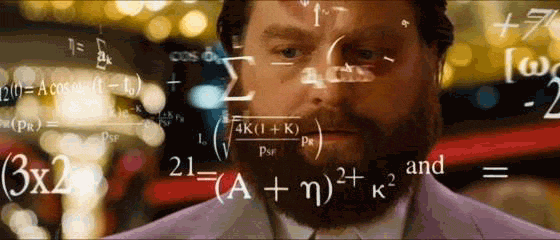
If you're shooting a crossbow into a dimly lit room with a +5 attack bonus, and your target is caught off guard while a carriage left Absalom traveling norhtwest at 15 mph...
Even a veteran might take a minute to account for them all, and to a new player it’s utterly overwhelming. There’s a reason it’s often referred to as Mathfinder.
The sheer number of playable races and classes was both a blessing and a curse, and that’s without getting into the literal hundreds of feats. It takes a long time to learn the system well enough to create the weird and/or overpowered character ideas that Pathfinder 1e makes possible. For example, I loved my halfling barbarian who could dual-wield full size greataxes (effectively!), but it felt like I needed an associate’s degree in Pathfinder Studies before I could pick the right combination of feats, ability scores, and magic items to make it work. And if that was an associate’s degree, there are people out there who have doctorates in it.
The point is, while Pathfinder 1e is an extremely flexible and fun system, it’s simply not accessible to new players. In today’s gaming scene, you need to attract as many players as easily as possible, and that kind of inaccessibility can spell death for a system that wants to build adventurer leagues in gaming stores across the country.
So how does Pathfinder 2e address this issue? With a simplified - not dumbed-down - combat system, reworked classes and feats, and an overall feeling that Paizo took a long, hard look at both its original game and the fifth edition of Dungeons and Dragons, took what worked from each, and put them together into something that felt welcoming and familiar.
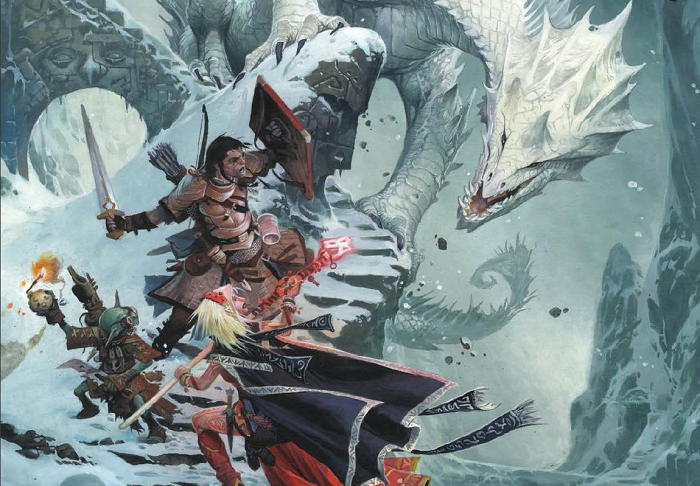
Yet, even with all of the influence from previous editions and other games, Pathfinder 2e has become something new with its own identity.
New Heroes Approach - Characters And Creativity
Three mighty champions approach the necromancer’s lair. Their armor gleams, and their weapons shine with holy power. The first is a paladin, sworn to uphold the law and to act with honor and integrity. He comes to strike down evil and protect the people. The second is a redeemer, sworn to set others on the righteous path and to always act with kindness and compassion. He holds out hope that the necromancer may yet be turned from his evil ways. The last is a liberator, sworn to fight for others’ right to be free and to make their own choices. She comes to liberate the people from the necromancer’s undead scourge.
Though each is sworn to a different god and a different code, the three are united in serving the forces of good, and each wields divine magic in service to that cause. With the gods on their side, they will surely be victorious.
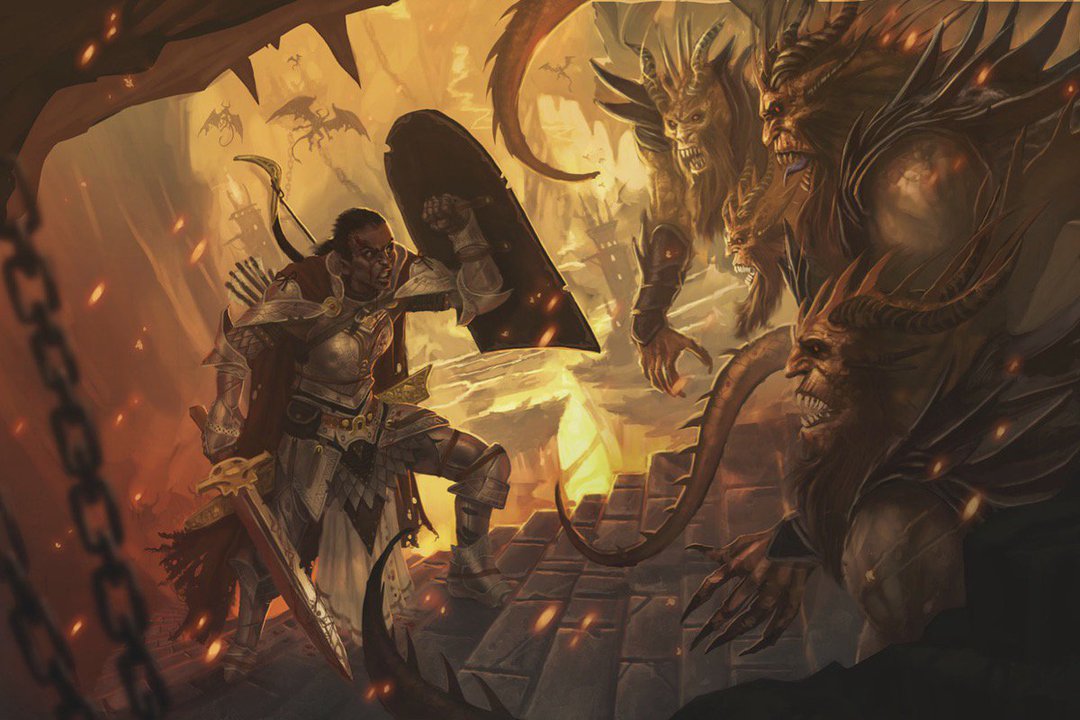
“Hey! Hey! Candle won’t light. We shouldn’t be here!”
The paladin sighs exasperatedly and looks to the fourth member of their party, a goblin. Their alchemist was holding the candle she worshipped as a god, looking very concerned that it wouldn’t stay lit in this damp, oppressive place. None of them quite knew why the goblin was there, but she’d proven surprisingly resourceful in the past, and she somehow lived off of their garbage and table scraps. They’d become surprisingly fond of her. She was like their mascot, or a particularly smelly pet.
Plus, they just couldn’t seem to get rid of her.
While the classes, ancestries, and world of Pathfinder have all been retooled for the second edition, the only brand new content is the champion class. It’s a heavily-armored martial class with a splash of healing magic, clearly taking the place of the paladin (and, in fact, one of the subclasses is the paladin), but there’s one interesting difference.
In 1e a paladin was lawful good. No ifs, ands, or buts. A paladin who was not all lawful good all the time was no longer a paladin, and it led to a lot of them being “party mom” buzzkills. The champion class expands your options a bit: while the paladin still has to be lawful good, you can also choose to be a neutral good redeemer or a chaotic good liberator. You still have to hold true to your code - any change in alignment causes you to lose your divine powers until you atone - but at least you aren’t forced to be so strictly by-the-book.
Of course it’s possible to play a lighthearted, fun-loving paladin, but it can be a tough balance to strike.
They’ve also brought the goblin race (or ancestry, as it’s now called) and the alchemist class to the Core Rulebook. The goblin ancestry could be an article by itself: why Paizo decided to make it a core ancestry, their place in the world, and how players over the last few years have gained a love for smaller usually evil races like goblins or kobolds. Adding them to being a standard class is a bold move that makes a lot of sense. It will be interesting to see how the choice plays out; standard tropes about goblins are still used by many players, and a major part of their description is about other ancestries looking down on them.
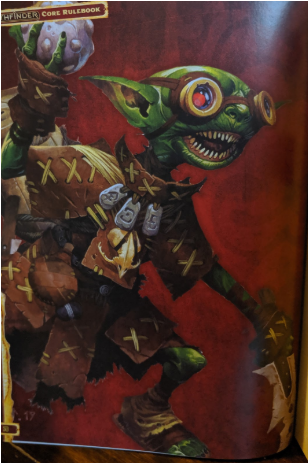
Something tells me there's a reason why they released the goblin and the alchemist at the same time.
For now, I’ll just say that goblins a bit like what gnomes used to be: they’re energetic, enthusiastic creatures who love to tinker and somehow repeatedly survive their inventions blowing up. Some people might think their antics are endearing, but many just see them as a nuisance. For the gnomes, they have been retold as a fey race that is filled with life and emotion that slowly lose it through 'the bleaching', a process that makes them less and less vibrant as they get older until the die. A lot of the ancestries have gotten some lore alterations from standard tropes, although most are more subtle. Its small changes like this which slowly add up, making Pathfinder 2e feel like not just a different system, but a different setting.
The alchemist is still what it always was: a pseudo-caster who uses science instead of magic to achieve similarly incredible effects. One notable difference is that the alchemist, like the champion, is now broken up into three subclasses: the healing chirurgeon, the ranged DPS bomber, and the melee-focused mutagenist. While the 1e alchemist had all of those options available through discoveries and feats, in 2e you’re more encouraged to specialize immediately. I wouldn’t quite say forced to specialize - you could pick one subclass and round it out with feats - but you’re definitely encouraged to choose one role and stick to it.
If you are seeing some similarities to how Dungeons and Dragons shifted from a feats and prestige class based system in 3.5e to a more streamlined subclass system in 5e, that's because you are. Don't worry though, because Pathfinder has found a way to put their own spin on it that causes the game to feel very different as an end result.
What’s Changed - A Whole New Way To Roll
A brand new class and new Core Rulebook content is all well and good, but of course the biggest question here is, what’s different? What exactly is Pathfinder 2e, how is it different from its predecessor, and do we really need it?
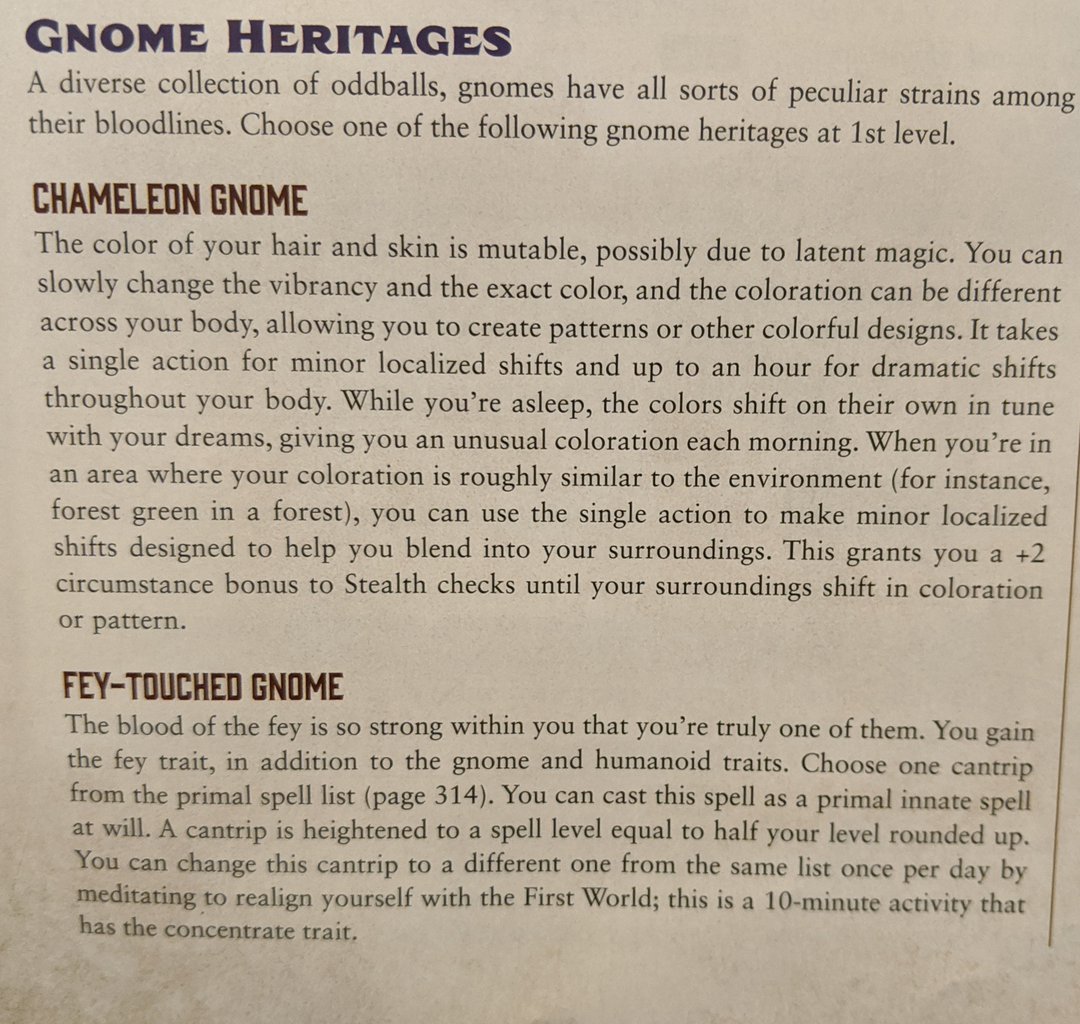
Each ancestry comes with a number of heritages that give additional skills or abilities.
No discussion of Pathfinder would be complete without talking about combat. The combat in 2e has been majorly changed, and in a very different way from D&D 5e. Instead of worrying about minor/major/standard/move/etc, you just have three all-purpose actions. You can use an action to move, draw your weapon, attack, cast a spell, or anything else you might need to do in combat. Paizo has really boiled combat down to its core mechanics to rebuild it from the ground up, and it feels great.
Each action you choose now has a lot more weight. Readying an action can be done by using two actions, but lets you manipulate the initiative and battlefield. If you want to use multiple actions to make multiple attacks, you can do that at a penalty. You can take feats to reduce that penalty, similar to how two weapon fighting used to work. Meanwhile, many spells require multiple actions to cast, which severely limits how much magic you can sling around in one turn. You even have to spend an action to raise your shield or point out hidden foes, choices that cost time, but are very valuable. The system’s been totally reworked, yet still feels familiar.
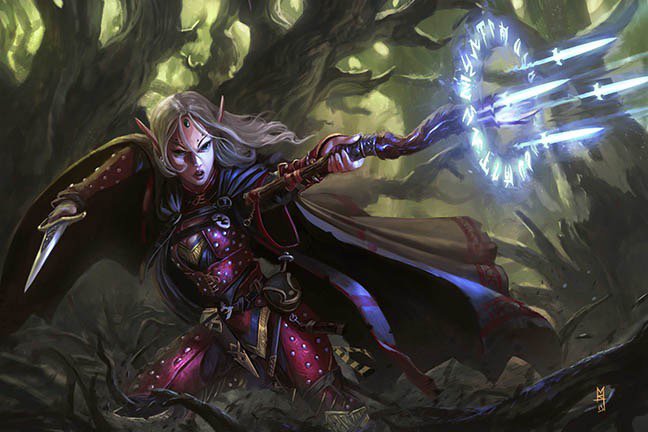
Also, in a break from decades of precedent, natural 20s and 1s are no longer crits and fumbles. Instead, passing a check by 10 or more is a critical success, and missing by 10 or more is a fumble. I like this change, and in fact I know people who have used this as a houserule for years, but this one will come down purely to personal taste. Maybe you’ll miss the excitement of knowing that your Strength 8 gnome wizard has a 5% chance of punching God, or maybe you’re relieved that your level 15 fighter no longer has a 5% chance to forget how swords work. If you’re still faithful to the old ways, you can always houserule it back.
Simplified Complexity
Skills haven’t escaped the streamlining process either. Gone are the days of carefully tallying up skill points - 2e skills simply have 5 levels of proficiency, ranging from untrained to legendary. Being untrained, as you might expect, gives you no bonus to your skill check. Being trained, expert, master, or legendary gives you a bonus of your character level plus 2, 4, 6, or 8, respectively. These proficiency levels also determine what you’re able to use the skill for. An untrained swimmer might be able to struggle across a still pond, if he’s lucky, while a legendary swimmer could potentially go straight up a waterfall - increased proficiency is worth a lot more than a mere +2 bonus.
Naturally, deciding whether a character’s skills are good enough to even try the task at hand is a judgment call for the GM, but it is nice to have some guidance in making those decisions. As with many of the reworks in Pathfinder 2e, this new system throws out a bit of the classic system’s fine-tuning capabilities in favor of user-friendliness. At the same time, there are more options in character creation and levelling than there are in the behemoth D&D 5e. Its subtle, but you start really seeing the payoffs when you roll up three characters of the same class and see how wildly different they can be. Sure, every rogue will be trained in stealth, but varying levels in skills leads to characters feeling more specialized and unique.
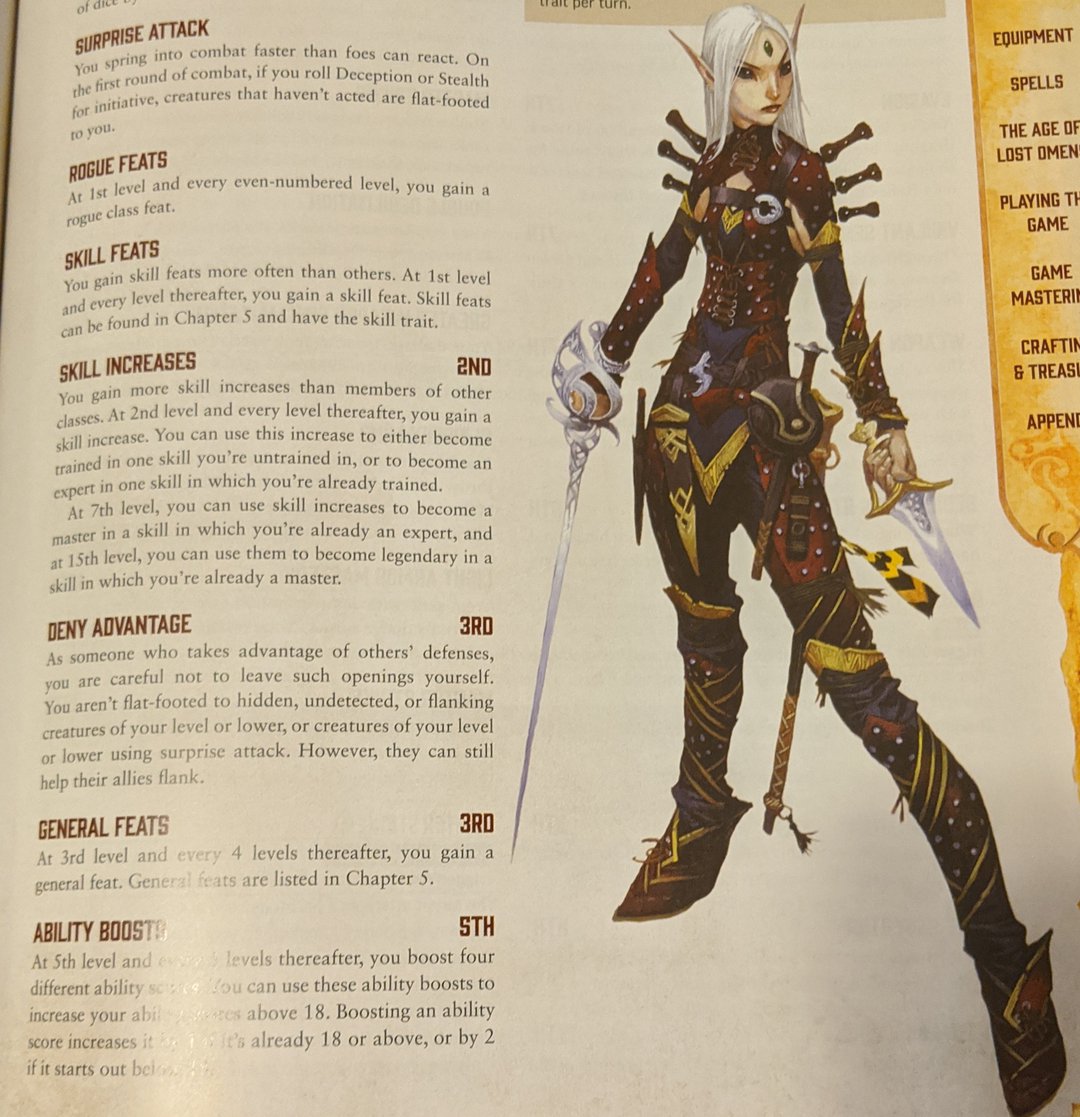
You may also notice that you're now forced to take some class-specific feats, rather than simply having access to them.
Speaking of reworked systems, character creation has also gotten an overhaul right from the start. Paizo has taken a page from… uh, Paizo, by boosting characters’ HP and making backgrounds a key part of character creation, as in Starfinder. Backgrounds are now commonplace in RPGs, but they are integrated very well in this edition. Don't worry, feats are still the bread and butter of Pathfinder - and you even get feats directly related to your ancestry, making your character feel more and more like a paragon of your heritage as you level up. It makes your first few choices in character creation feel like they really matter. Also, instead of just getting HP from your class, you now get a one-time boost from your ancestry as well. Being a dwarf just got a lot more useful if you enjoy surviving level one!
In a change that might ruffle some feathers, rolling for HP is no longer a thing. Each level you just get a flat amount according to your class and constitution. Personally, I never liked the idea that my character could be permanently weakened by a couple of bad rolls, and always opted for the variant rule where you take the average of your hit die. Having that codified as the only way to gain HP is bound to cause some grumbling, and it’s one thing that I’m not sure is a good choice. We had a perfectly workable alternative for people who didn’t like the random chance of rolling HP in 1e. Unlike the crit/fumble rolls, houseruling this back to the old way will cause balance issues, since the whole game is scaled with these higher HPs in mind.
Final First Thoughts
After getting over my knee-jerk resistance to 2e, and finishing my mourning period for 1e, I had a thought: maybe we don’t need more first edition Pathfinder. Maybe after a decade of content, including dozens of sourcebooks and countless modules, it’s time to move on. My two biggest complaints with 2e are that characters are a little less customizable, and that a lot of content that I loved in the first edition isn't usable right away. I'm sure that they will slowly rework much if it back in, but it still stinks to lose that access. There are also a lot of design choices in combat that are going to take some getting used to; having to use an action to raise your shield to gain its bonuses is going to throw off a lot of people.
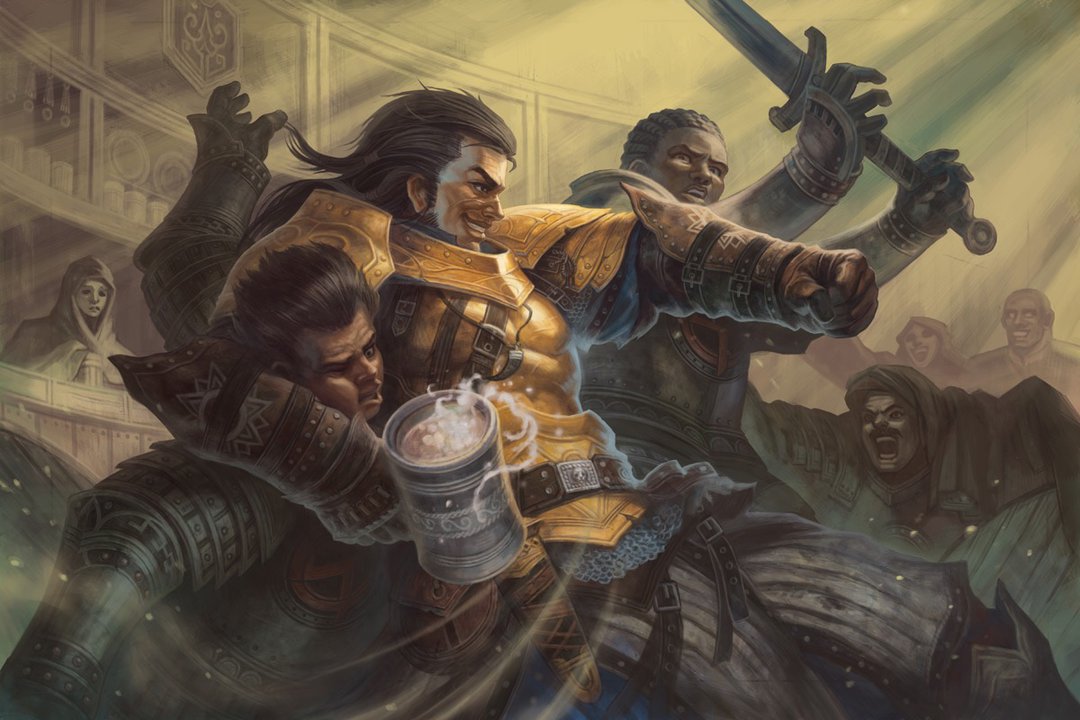
There's still a lot I haven't covered in the Core Rulebook, like the campaign setting itself. Don't worry, there is plenty of lore to let your players get into trouble.
A lot of choices that they've made in the new system buck tabletop RPG standards, which, honestly feels like the point. Its no small secret that Pathfinder had been originally made for players who wanted to keep improving the old D&D 3e formula rather than jump to a very different fourth edition. It was a choice that got a lot of popularity back in 2009, but the world of tabletop RPGs have fundamentally changed in the last decade. Dungeons and Dragons, always the trendsetter, made their fifth edition streamlined and trimmed down to allow for accessability, a choice that's paid off in spades in an era of streaming and podcasts. A refresh was needed for Pathfinder to both keep up and also stand on its own.
It's going to be strange the first time you have to use actions to raise your shield in combat, but it will also feel more rewarding when you build a character meant to block using shields. Spells have been retooled to make more sense in the Pathfinder combat system and world, making them now feel truly different; I love how sorcerers can have totally different spell lists based on their bloodline. Adding goblins as a default race and alchemists as a default class pushes the system to feel like it has its own identity.
In summary, I really like these changes, and see why they had to happen. Why design a new edition if it’s going to be just like the old one? Getting a chance to rewrite your core rules doesn't happen very often, and Paizo has taken the time to really take advantage of the chance. On the whole, what they’ve created is a more streamlined and accessible system that still feels a lot like classic Pathfinder. At the same time, they've pushed the game system enough so that it now feels fundamentally different, giving players a reason to put down rulebooks from other systems to give Pathfinder a try.
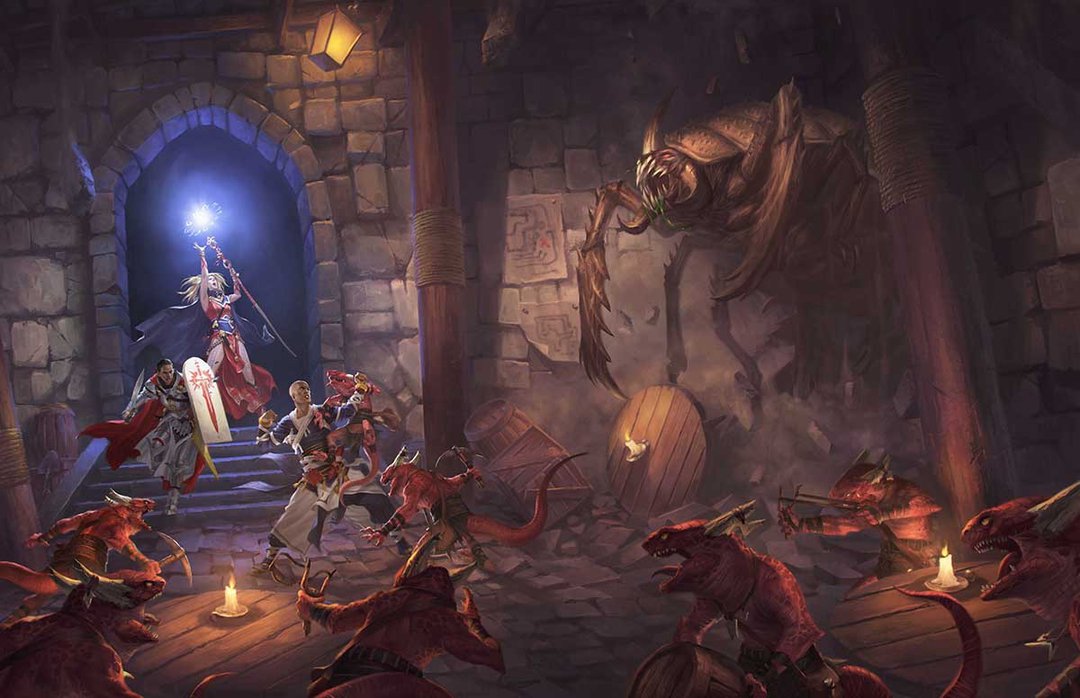
There are adventures to be had, monsters to fight, and plenty of paths to find in this great new edition.
Anyone who wants to stick with 1e certainly has enough to work with, and I have no doubt that the die-hard fans will keep churning out homebrew content. While it still makes me sad to think about Paizo leaving their flagship first edition behind, this new edition is a great new direction for this beloved RPG. I highly recommend giving Pathfinder 2e a try, whether you are a fan of the original or a brand new player looking for new adventure.